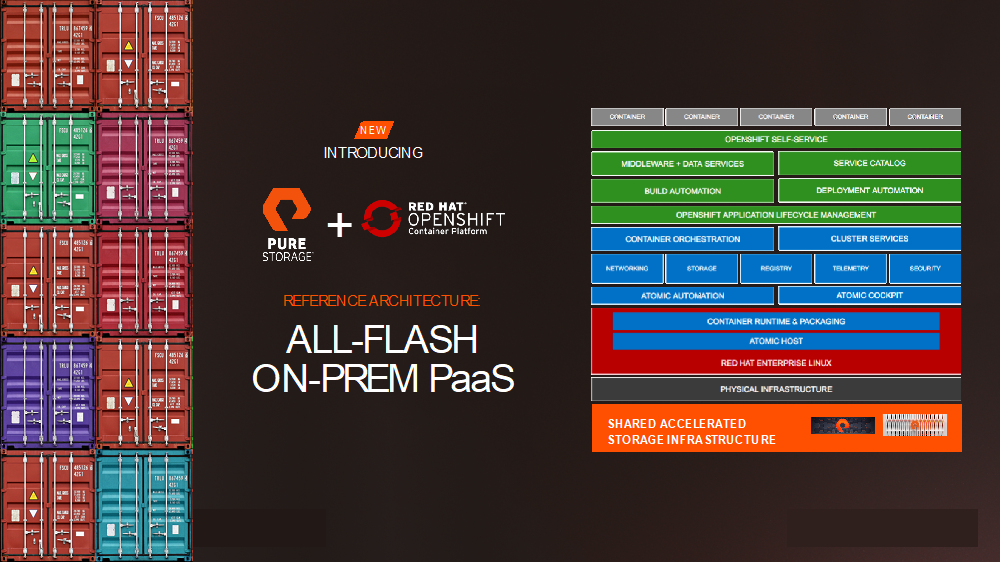Red Hat blog
Pure Storage® is excited to announce a reference architecture for Red Hat OpenShift Container Platform, using both Pure Storage FlashArray and FlashBlade™ to provide all the underlying storage requirements.
OpenShift Container Platform provides the processes, platforms and services required to create a modern Platform-as-a-Service (PaaS) offering that can be used to easily deploy your on-prem cloud.
With the growth of DevOps methodologies, including CI/CD pipelines and deployment of modern NoSQL databases in containerized solutions, there is a now a need to accelerate the performance of the persistent storage required for these applications.
By using Pure Storage FlashArray and FlashBlade this reference architecture allows users to easily provision all-flash for both block storage to provide read-write-once (RWO) persistent volumes as well as read-write-many (RWX) persistent volumes, to satisfy the needs of all applications.
However, storage in an OpenShift platform is not only required for the applications running in the containers, but also for the underlying architecture of the OpenShift platform. Again, Pure Storage products can be used to provide local Docker storage on all the OpenShift cluster nodes as well as providing a high-performance NFS backing store for the Docker Internal Registry.
The integration Pure Storage has provided for the container persistent storage is simple to install and configure and delivers container storage-as-a-service with smart provisioning and elastic scaling across multiple storage systems as additional nodes are brought into the OpenShift cluster.
The underlying functions provided in the Pure Storage OpenShift plugin are provided by the Pure Service Orchestrator, more details of which can be found here.
Rather than just talking about this Reference Architecture, let’s have a look at it in action…
Firstly, here is a video showing a demonstration of how simple it is to install the OpenShift plugin in a vanilla OpenShift deployment. Notice the first few commands show that this is a vanilla deployment.
During the video, you will see the format of the JSON file required to enable persistent storage to be created on either FlashArray or a FlashBlade, and then you see how the installation script has created all the necessary OpenShift components, including a FlexDriver pod for each node in the cluster.
Secondly, here is a video showing a simple deployment of a MongoDB database using persistent storage from a FlashArray.
In traditional IT infrastructures, a developer could wait days after requesting a server to run his database on. Here, using a PaaS architecture, this has been cut down to seconds. In this example the time elapsed between pressing ‘Create’ and the pod showing as ‘running’ is only 15 seconds!!
Now, your developers can get the agility that they expect they could only get from the public cloud.
To get a copy of the Reference Architecture and read more detail on the installation and implementation of the Pure Storage OpenShift plugin go here.

